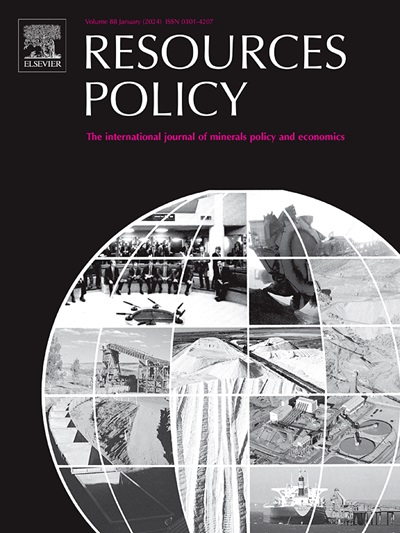Analysis of factors influencing metal markets across multiple scales – A smooth transition regression approach
IF 10.2
2区 经济学
0 ENVIRONMENTAL STUDIES
引用次数: 0
Abstract
Despite the significant influence of global factors on metal markets, this area remains underexplored, particularly regarding the distinction between short-term and long-term effects. This study examines the multiscale risk spillover effect from factors such as interest rates, energy markets, and developed and emerging stock markets. Additionally, it analyzes the risk transmission between precious and industrial metals. In this process, the study constructs systemic risk time-series for all markets using the Mahalanobis Distance methodology. By transforming raw data into wavelet D6 signals, long-term time-series are generated. Both raw and wavelet-based data are then integrated into a smooth transition regression model to assess nonlinear spillover effects over different time horizons. The findings reveal that precious metal markets are exposed to risk spillovers from industrial metals, energy markets, and stock markets, but only in the low-volatility regime and over the short term. In contrast, industrial metals experience spillover effects across both low- and high-volatility regimes within the short-term horizon. The most pronounced spillover effects originate from BRICS stock markets to industrial metal markets during periods of low volatility. In the long term, the results indicate that risk spillovers from industrial to precious metals become more prominent, suggesting that both markets are heavily influenced by broader economic cycles. The paper provides a wide range of results, which can be valuable for investors, portfolio managers, and policymakers.
跨多个尺度影响金属市场的因素分析——平滑过渡回归方法
尽管全球因素对金属市场有重大影响,但这一领域仍未得到充分探索,特别是在区分短期和长期影响方面。本研究考察了利率、能源市场、发达国家和新兴市场股票市场等因素的多尺度风险溢出效应。此外,分析了贵金属与工业金属之间的风险传导。在此过程中,研究使用马氏距离方法构建了所有市场的系统风险时间序列。将原始数据转换成小波D6信号,生成长时间序列。然后将原始数据和基于小波的数据整合到平滑过渡回归模型中,以评估不同时间范围内的非线性溢出效应。研究结果表明,贵金属市场受到工业金属、能源市场和股票市场风险溢出的影响,但仅在低波动机制下和短期内。相比之下,工业金属在短期内对低波动性和高波动性都有溢出效应。最明显的溢出效应来自金砖国家股市在低波动时期对工业金属市场的影响。从长期来看,研究结果表明,从工业到贵金属的风险溢出效应变得更加突出,这表明两个市场都受到更广泛的经济周期的严重影响。本文提供了广泛的结果,这些结果对投资者、投资组合经理和政策制定者都是有价值的。
本文章由计算机程序翻译,如有差异,请以英文原文为准。
求助全文
约1分钟内获得全文
求助全文
来源期刊

Resources Policy
ENVIRONMENTAL STUDIES-
CiteScore
13.40
自引率
23.50%
发文量
602
审稿时长
69 days
期刊介绍:
Resources Policy is an international journal focused on the economics and policy aspects of mineral and fossil fuel extraction, production, and utilization. It targets individuals in academia, government, and industry. The journal seeks original research submissions analyzing public policy, economics, social science, geography, and finance in the fields of mining, non-fuel minerals, energy minerals, fossil fuels, and metals. Mineral economics topics covered include mineral market analysis, price analysis, project evaluation, mining and sustainable development, mineral resource rents, resource curse, mineral wealth and corruption, mineral taxation and regulation, strategic minerals and their supply, and the impact of mineral development on local communities and indigenous populations. The journal specifically excludes papers with agriculture, forestry, or fisheries as their primary focus.
 求助内容:
求助内容: 应助结果提醒方式:
应助结果提醒方式:


